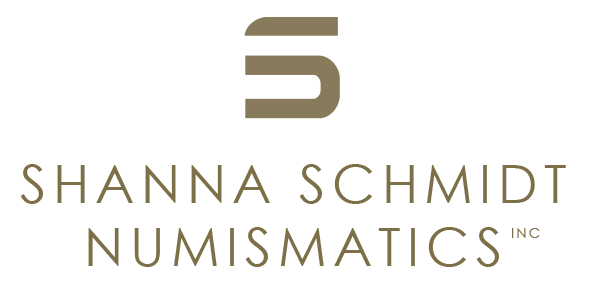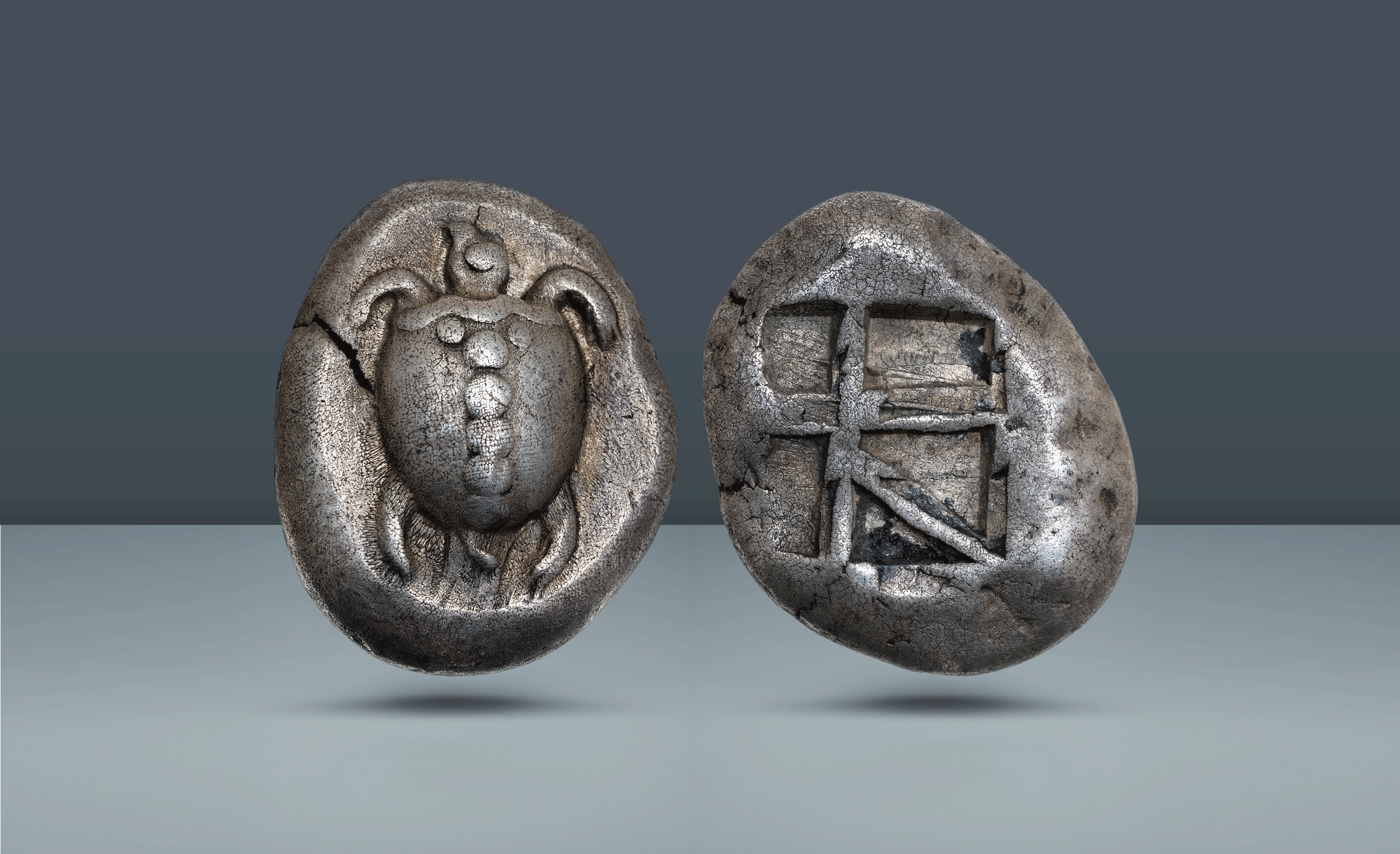Islands off Attica, Aegina. c. 470/65-445/40 BC
Islands off Attica, Aegina. c. 470/65-445/40 BC
AR Stater, 17.136g (20mm, n/a).
Sea turtle, head in profile, with 'T-back' design on shell. / Large square incuse with skew pattern
Pedigree: Purchased privately and from a UK collection
References: Meadows, Aegina, Group IIIa. Milbank Period III. HGC 6, 435.
Grade: Lovely fully visual sea turtle. Getting a full turrtle with all four limbs visible. Also the eye of the turtle is often worn or not visible. One edge split at 10h on obverse. A few splotches of old encrustation. Pretty cabinet toning. almost Mint State
gk2050
Scroll down for more information about this coin.
The staters of Aegina occupy a foundational place in Greek numismatics, being among the earliest silver coinages struck in the ancient world, beginning around just after the dawn of coinage in 650 BC. In contrast to the electrum issues of Lydia and Ionia, Aegina’s choice of silver made its coins more practical for widespread commerce.
The sea turtle, sacred to Aphrodite and emblematic of Aegina’s maritime identity, quickly became one of the most recognizable coin types in the Mediterranean. Its enduring design reflects the island’s dominance as a seafaring and trading power during the Archaic and early Classical periods. Archaeological evidence shows that Aeginetan staters circulated as far afield as Egypt, Italy, and the Levant, making them arguably the first “international currency” of the Greek world.
By the mid-5th century BC, following Aegina’s defeat by Athens, the turtle design gave way to the land tortoise-a change often seen as symbolic of the island’s loss of naval supremacy. Yet for nearly two centuries, the turtle stater was the coin of choice for merchants across the Aegean.
The present example, from Meadows’ Group IIIa (Milbank Period III), captures the type at its artistic peak. Its rarity lies not in survival-Aegina staters are plentiful-but in condition: complete flan, limbs, and eye intact, with pleasing toning and excellent detail. It is precisely these qualities that make such pieces highly desirable to both advanced collectors and students of monetary history.

